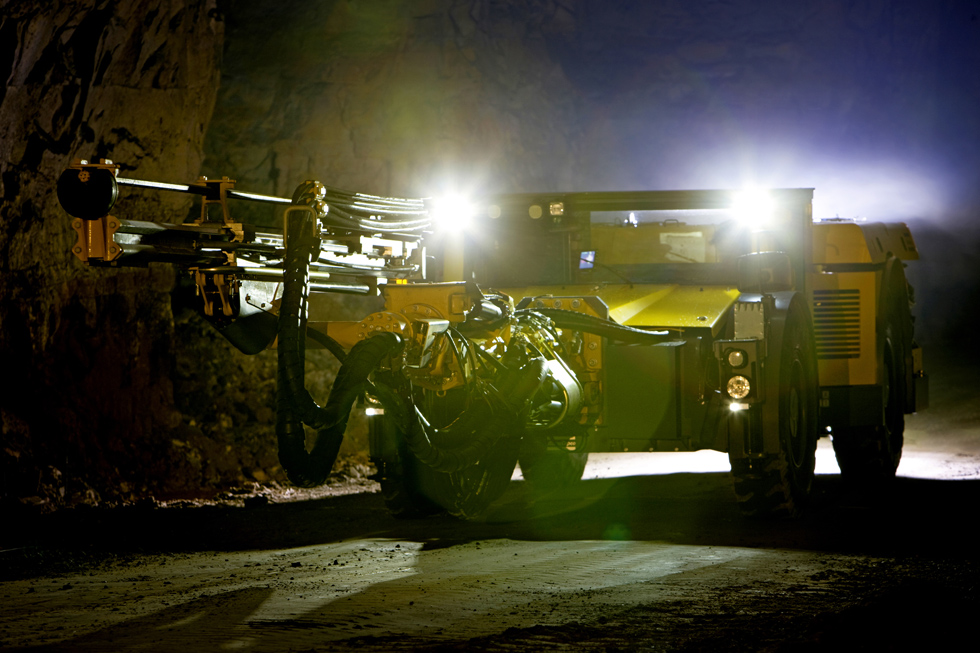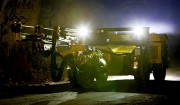In the southwest region of Poland known as Lower Silesia, the Rudna mine stands as one of the most significant copper deposits in Europe. It is also a resource base for one of the country?s largest exporters, the mining group KGHM Polska Mied.
Established in 1961 as a state enterprise under the name Kombinat-Górnizo-Hutniczy Miedzi (Copper Smelting Mining Combine), it was transformed in 1991 into a joint stock company.
KGHM is today the largest producer of silver and the ninth largest producer of copper in the world with core operations extending throughout the area typically known as the Legnica-Glogów copper belt.
An evolving challenge
As the largest employer in Lower Silesia with 18?000 people directly involved in the mining process and a further 10?000 working for its subsidiaries, KGHM?s properties cover an area of around 467?000 km2. These include the Lubina, Rudna and Polkowice-Sieroszowice mines, as well as a concentrator, two copper smelters, a wire rod plant and various auxiliary units.
At the Rudna mine, which opened in 1969, mining is carried out 24 hours per day over four shifts. KGHM extracts 30 M tonnes of ore per year, with a copper content of 1.8 % and 46 g per tonne of silver, taking miners and equipment deeper and deeper into narrower drifts.
Divided into 13 mining sections, Rudna has 11 shafts in operation that range from 950?1?250 m in depth. Here, KGHM has used Atlas Copco?s Boomer S1 L low profile, hydraulic face drilling rig and operators and engineers have been pleased with the performance. But as conditions become more demanding and with plans to extend the workings at Rudna even deeper over the next few years, KGHM turned to its long-term supplier to propose a new drill rig.
Atlas Copco has worked closely with KGHM for many years to provide sales, service and support for machines at all three mines and stepped up to the new challenge.
To get the full story, M&C visited the Rudna mine where KGHM uses room-and-pillar mining methods, working in high ambient temperatures due to heat generated by machines and rock mass.
?The older models were just not meeting our customers? requirements for mining deeper, narrower seams and so we began exploring options for a new model,? explains Andrzej Szo?tysik, parts and service manager for Atlas Copco in Poland. Together with his colleague Bogus?aw Holda, Szoltysik began working on plans for a new rig prototype in 2005 at Atlas Copco?s service base in Polkowice. As part of the project, KGHM sent three engineers to join the design-and-build team.
The key offering
?It was a perfect example of team work,? Szoltysik tells M&C. ?This level of cooperation meant that we understood the mine?s requirements exactly and the results were outstanding. The Boomer was to become a very significant part of our product range and we expect it to remain a key offering in the next ten years or more.?
Although the project was shelved temporarily following the global financial crisis in 2008, plans were revisited and, in 2009, the development of the Boomer M1 L began at Atlas Copco?s facility in Sweden. After nearly two years of development, the prototype rig was delivered to Rudna mine on November 15, 2010.
Following a six-month trial period, the Boomer M1 L prototype had completed nearly 800 operational hours and drilled more than 32?000 holes averaging 3.2 m in length. And during this period it achieved 90% availability and 75 % utilization with several maintenance stops. A compre-hensive test report was compiled after the trial, which included the opinions of operators and the management team in addition to operating statistics.
?We were satisfied with the positive design and test of the unit,? explains Leszek Szewc, manager of Rudna?s mechanical division. ?Our goals were met.?
While some improvements were made to operator controls, electrical components and the location of rear-view cameras, the success of the prototype meant that KGHM purchased four Boomer M1 L units in 2011. A fifth unit was delivered in March 2012 and KGHM has since placed orders for a further 15 to be delivered through 2013.
Serviceable and robust
When asked about the ongoing relationship between KGHM and Atlas Copco, Szewc says: ?It is absolutely necessary. We are currently concentrating on optimizing the number of machines that we use across our organization and improving their utilization.
?The orebody at Rudna is declining and the older areas are now mined out, so we are working very low-profile drifts. At 1?100 m depth, the drifts are around 2?2.5 m high, and operations at Glogow Deep Industrial will be deeper than 1?200 meters so it is very important that our equipment is up to the task.?
Serviceability and robustness were two of the main focuses during the rig?s development. Measuring 13.6 m long and 1.8 m high, the Boomer M1 L is ideal for drifts of over 2 m and provides face coverage of 5.8 m high and 8 m wide without having to move the rig.
The Boomer M1 L has a modular design where around 80?90% of the electrical and hydraulic components are the same as on the Boomer S1 L.
?The articulation point has been designed more like that of a loader than a rig,? says Robert Jankowski, Business Line Manager for underground rock excavation at Atlas Copco.
Another key feature of the M1 L is the new, enclosed, air-conditioned operator cabin. Operator Mariusz Gawronski demonstrated the prototype: ?It is a revelation,? he says. ?Compared to the Boomer S1 L and other rigs, it is much more comfortable. The air-conditioning makes a big difference and because the cabin is enclosed, it is much quieter now which means I can concentrate better.?
Epiroc operated under the trademark “Atlas Copco” prior to January 1, 2018.



Here:
Us: